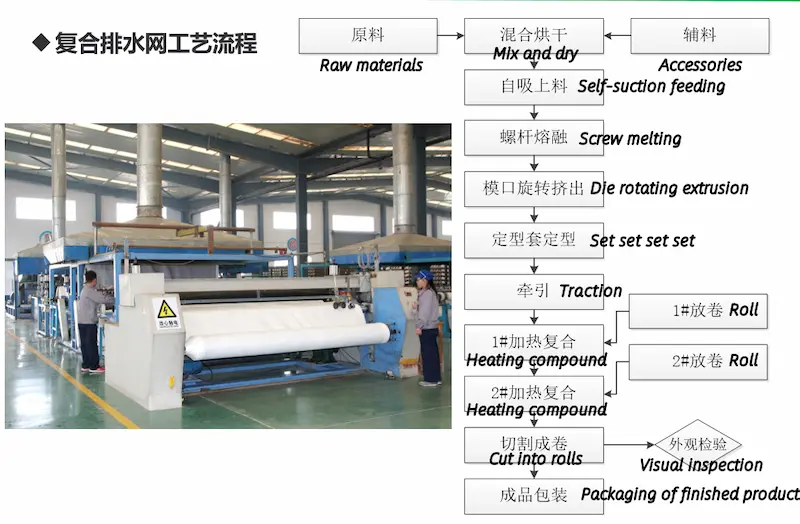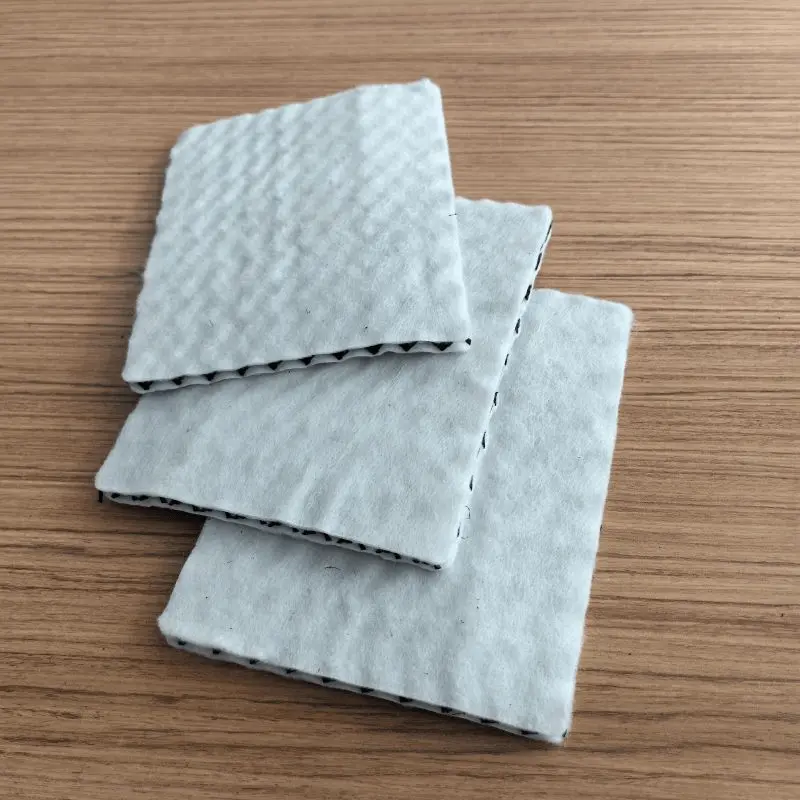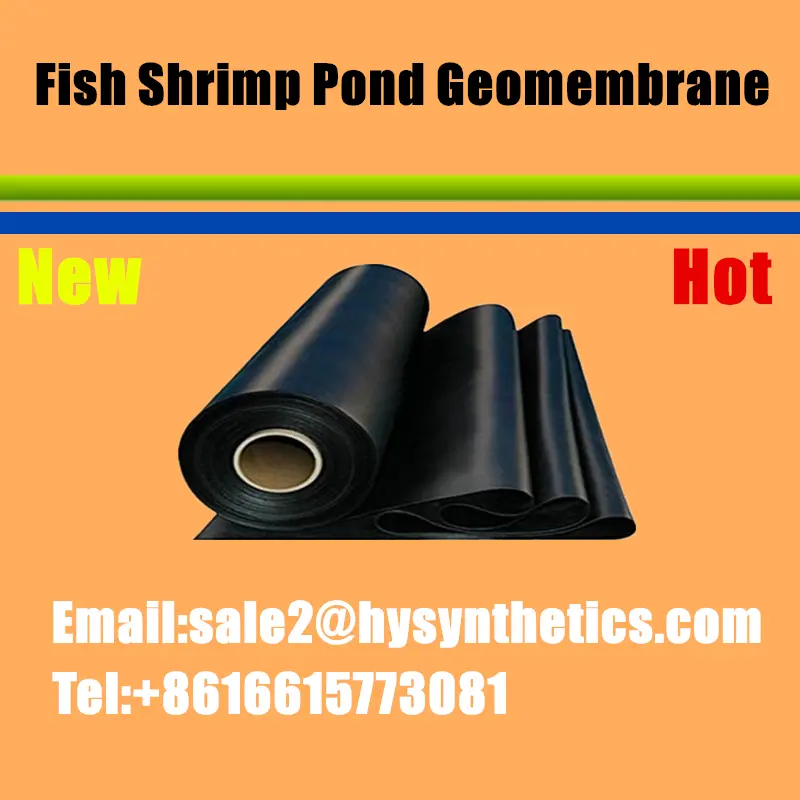The production of 3D composite drainage nets involves a series of manufacturing steps to create a versatile and efficient drainage system. These nets are commonly used in civil engineering and construction projects for effective water drainage and soil consolidation. Here is an overview of the typical production process for 3D composite drainage nets:
How is the 3D composite drainage net produced?

Raw Material Selection:
Choose high-quality raw materials suitable for the intended application. Common materials include various plastics like polyethylene (PE), polypropylene (PP), or a combination of different polymers. These materials should possess characteristics such as durability, flexibility, and resistance to environmental factors.
Extrusion of Core Material:
The core of the 3D composite drainage net is typically formed through an extrusion process. In this step, the selected polymer material is melted and forced through a die to create a continuous profile. The profile can have a specific geometric structure, such as a three-dimensional grid or honeycomb pattern, depending on the desired drainage characteristics.
Introduction of Geotextile Layers:
Geotextile layers are often incorporated into the 3D composite drainage net to enhance its filtration and soil retention properties. These layers may be non-woven or woven fabrics, and they are introduced during the manufacturing process. The layers are bonded to the extruded core material through a lamination process.
Lamination and Bonding:
The extruded core material and geotextile layers are laminated together to form a composite structure. This can be achieved through various bonding methods, such as heat bonding or adhesive lamination. The goal is to create a strong and durable connection between the core and geotextile layers.
Texturing and Surface Modification:
The surface of the 3D composite drainage net may undergo texturing or surface modification to enhance its water flow characteristics. This step can involve embossing or creating specific patterns on the surface to increase friction and promote efficient water drainage.
Rolling and Cutting:
The continuous sheet of 3D composite drainage net is rolled onto spools or cut into specific lengths, depending on the application requirements. Precision cutting ensures that the final product meets the dimensional specifications for installation.
Quality Control:
Implement quality control measures throughout the production process to ensure that the 3D composite drainage nets meet industry standards and project specifications. This may involve testing for durability, tensile strength, water permeability, and other relevant parameters.
Packaging and Distribution:
After passing quality control checks, the finished 3D composite drainage nets are packaged and prepared for distribution. Proper packaging ensures that the product reaches the end-user in optimal condition.
This production line equipment is leading in China. The equipment is not only exquisitely crafted, but also has superior performance, low noise, low energy consumption, high automation of the production line, advanced production technology, convenient adjustment of process parameters, and leading domestic product quality.
Advanced equipment
1.Selection of new high-efficiency screw, uniform material plasticization, high yield;
2.Use of new rotating die head, stable 3D structure of the mesh core, good drainage performance;
3.3D mesh composite device (patent certificate), using a new online hot composite device, high peeling strength of the composite drainage net.
FAQ
What is a 3D composite drainage net?
A 3D composite drainage net is a geotechnical material designed for efficient water drainage and soil consolidation in civil engineering and construction projects. It typically consists of a three-dimensional core structure with integrated geotextile layers for enhanced filtration.
What are the main raw materials used in the production of 3D composite drainage nets?
Common raw materials include plastics like polyethylene (PE) or polypropylene (PP). These materials offer durability, flexibility, and resistance to environmental factors.
How is the core structure of the 3D composite drainage net produced?
The core structure is often created through an extrusion process, where the selected polymer material is melted and forced through a die to form a continuous profile. This profile can have a specific geometric pattern for optimal drainage.
Why are geotextile layers integrated into the 3D composite drainage net?
Geotextile layers enhance the filtration and soil retention properties of the drainage net. These layers are introduced during production and bonded to the core structure through lamination.
What bonding methods are used in the lamination process?
Various bonding methods can be employed, including heat bonding or adhesive lamination. The goal is to create a strong and durable connection between the core and geotextile layers.
How is the surface of the 3D composite drainage net modified to improve water flow characteristics?
Surface modification may involve texturing or creating specific patterns on the surface through processes like embossing. This helps increase friction and promotes efficient water drainage.
What quality control measures are implemented during production?
Quality control measures include testing for durability, tensile strength, water permeability, and other relevant parameters. These checks ensure that the final product meets industry standards and project specifications.
How is the finished 3D composite drainage net packaged for distribution?
The finished product is typically rolled onto spools or cut into specific lengths, depending on application requirements. Proper packaging is then employed to ensure that the product reaches the end-user in optimal condition.
What are the primary applications of 3D composite drainage nets?
3D composite drainage nets are commonly used in erosion control, slope stabilization, landfill construction, road and railway projects, and various other civil engineering and environmental applications.
283.webp)

210.webp)
696.webp)
701.webp)

133.webp)
483.webp)
214.webp)
934.webp)